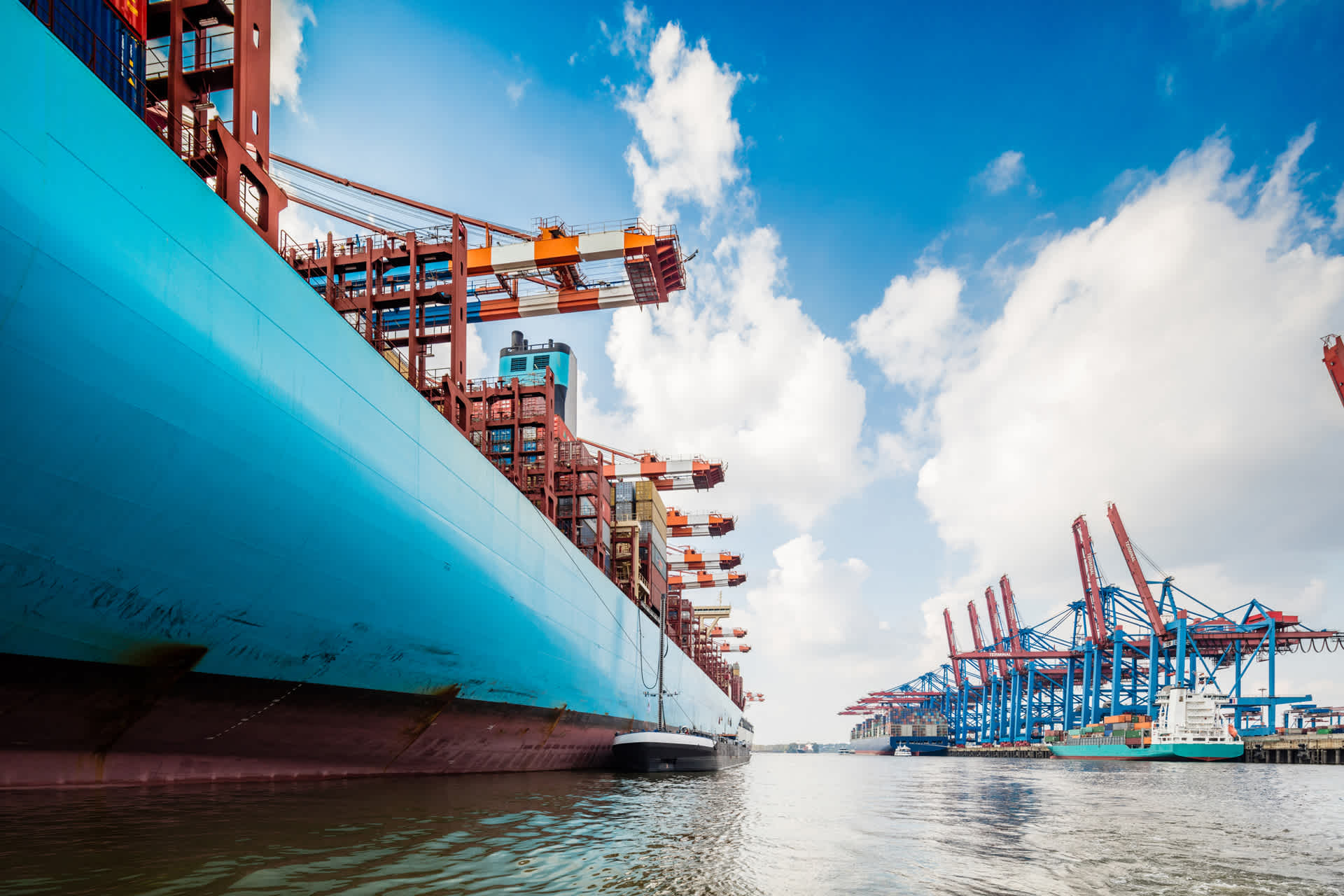Global Logistics Update
Freight Market Update: August 30, 2022
Ocean and air freight rates and trends; customs and trade industry news plus Covid-19 impacts for the week of August 30, 2022.
Freight Market Update: August 30, 2022
European Freight Market Update Live | Tuesday, September 6 @ 16:00 CEST / 15:00 BST
North America Freight Market Update Live | Thursday, September 8 @ 8:30 am PT / 11:30 am ET
Ocean Freight Market Update
Asia → North America (TPEB)
- Rates, volume, and demand continue their downward trend. The standard cyclical peak season appears to be pushed off, yet Transpacific Eastbound (TPEB) volume is projected to decline through the end of the year due to over-ordering and low demand. Despite more favorable rates, blank sailings, port congestion, and US intermodal delays continue to affect schedule reliability.
- Rates: Rates remain soft in many major pockets.
- Space: Open, except in a few pockets.
- Capacity/Equipment: Open, except in a few pockets.
- Recommendation: Book at least 2 weeks prior to cargo ready date (CRD).
Asia → Europe (FEWB)
- There is no peak season and demand has been slowing down. Supply is still relatively tight due to the large amount of blank sailings, vessel sliding, and port omissions. The port congestion in Europe, particularly Hamburg and Rotterdam, has reached critical levels causing further delays and late return of vessels to Asia. There are indications of power cuts in Ningbo (Zhejiang province) which would affect production output but there is still no official information available.
- Rates: There is continued rate pressure on spot rates due to lower demand.
- Capacity/Equipment: Space is available but it is impacted by additional blank sailings and delays due to the port congestion in Europe.
- Recommendation: Allow flexibility when planning your shipments due to anticipated congestion and delays.
Europe → North America (TAWB)
- In a clear reversal of trends, U.S. East Coast (USEC) ports are now handling more cargo than the U.S. West Coast (USWC) ports. Historically USWC handles 40% more volume than USEC but at the moment we are seeing the demand shifting and this is also the cause for the current congestion in some ports (Savannah, Newark, Houston).
- Rates: Stable at high levels. No sign of steep rate decline in the near future. Some drop on FAK levels out of Turkey as some capacity is freeing up.
- Space: Still very tight on the USEC with some space open for direct routing to the USWC.
- Capacity/Equipment: Equipment availability remains the biggest challenge for all EU origins, particularly in the Mediterranean region. Low empty stacks at inland depots, prioritize pick up from the Port of Loading.
- Recommendation: Book 4 or more weeks prior to CRD. Request premium service for higher reliability and no-roll.
Indian Subcontinent → North America
- The Indian Subcontinent market remains strong even as rates begin to creep lower—carriers continue to be bullish on this trade lane.
- Rates: Rate changes occurring with more velocity across the market. U.S. West Coast (USWC) being the most affected where rates are coming closer to TPEB levels.
- Capacity/Space: Space is available across most lanes at standard (non-premium) rates. Decreases in port congestion around the world is effectively increasing capacity as ships are experiencing less delays for shorter periods.
- Equipment: Rising equipment deficits are being reported across India, particularly in smaller ports and inland container depots (ICD).
- Recommendation: Take advantage of declining rates.
North America → Asia
- U.S. East Coast (USEC) ports continue to see challenges with vessel congestion and some vessel strings still omitting Charleston and Savannah entirely. Erratic vessel schedules continue to cause significant challenges with changes in posted earliest return dates and vessel cut-offs at the port. For USWC, arrivals and available capacity for LA is generally open whereas Oakland and Seattle are more fluid.
- Rates: No GRI’s announced for September.
- Capacity/Equipment: Deficits on containers and chassis continue to plague Inland Port Intermodal (IPI) origins. Chicago has been the most reliable. Availability for standard equipment has not been an issue for most ports. Capacity from the US Southeast to India remains constrained due to continuing port omissions for Charleston and Savannah. Overall capacity for India ports requiring a transshipment service remains very tight from both the USEC and USWC.
- Recommendation: Please place bookings 4 weeks prior to vessel Estimated Time of Departure (ETD).
North America → Europe
- Congestion issues persist in Europe but are reported to be improving. Hamburg is experiencing the most significant congestion at present. The port of Houston continues to experience significant capacity constraints due to schedule delays and port congestion with one service still reduced running from weekly to biweekly. USWC service to Europe remains extremely tight due to void sailings and skipped ports caused by systematic delays. USWC coverage for Mediterranean ports now has reduced capacity due to one string being phased out.
- All carriers continue their booking stop for shipments to Ukraine, Russia, and Belarus.
- Rates: No further GRI announcements for September or October.
- Capacity/Equipment: USEC service to Northern Europe has capacity available however Savannah has irregular challenges due to it being omitted on certain vessel strings. Vessel capacity from the port of Houston has been very tight due to a significant increase in demand and delayed vessels.
- Deficits are still plaguing many IPI origins. Availability for standard equipment at ports has not been an issue, but special equipment is hard to come by.
- Recommendation: Please place bookings 3 to 4 weeks in advance for East Coast/Gulf sailings and 6 weeks for Pacific.
North America Vessel Dwell Times

Air Freight Market Update
Asia
- N. China: Demand in the market is slowly picking up as we head into September, however rates remain stable. The US government recently announced the suspension of 26 China-bound flights, covering four Chinese carriers, from the US in response to the Chinese government’s decision to suspend several US carrier flights over Covid-19 cases. The Chinese carriers affected are Xiamen, Air China, China Southern Airlines, and China Eastern Airlines. While the ban will apply for flights that were scheduled to depart from 9/5-9/28, the impact is mainly on passenger aircraft and has no large impacts on freight capacity ex-China.
- S. China: Market demand remains soft and rate levels similar to last week. The SZX-HKG cross border situation continues to improve, however please expect 1-2 days additional transit time.
- Taiwan: Due to the month’s end, TPEB capacity is tighter than last week while Far East Westbound (FEWB) capacity is constrained with all direct flights sold out for the week. Overall, rates remain stable.
- Korea: The market ex-Korea continues to be slack with no signs of picking up.
- SE Asia: Demand ex-Malaysia continues to be soft with rates maintaining at similar levels. TPEB demand ex-Vietnam and ex-Thailand is beginning to pick up due to the month’s end and Vietnam's public holiday approaching. Vietnam in particular is seeing space tighten quickly and rate increases on palletized cargo. FEWB demand on the other hand, remains stable.
Europe
- Demand continues to be soft going into September.
- Capacity levels are expected to continue at the same levels throughout August & September, however increase in demand will increase lead time.
- Ground handling disruptions may still affect the main European hubs.
- Impact of disruption is more evident on the passenger rather than cargo side of the market.
- Start planning in advance for the peak season in order to secure more favorable rates and uplift possibilities.
Americas
- A heavy travel season in and out of Canada is putting a strain on the infrastructure of major airports (YYZ and YVR) which is having a trickle-down effect on cargo operations. This is resulting in longer than normal dwell times for both import and export cargo.
- Air Canada has announced they are gearing up to add additional flights out of all major gateways. These flights are likely to include both passenger and freighter options.
Trucking & Intermodal
Americas
US Import/Export Trucking: Market Trends
- Congestion continues at the Montreal and Toronto terminals and inland ramps. The volume coming into Toronto continues to surge, while the number of drivers continues to decrease, which translates into less drivers handling more volume and creating the previously mentioned congestion.
- Chassis shortages continue to persist, notably in Chicago, NY/NJ, Memphis (95% utilization, 10+ day street dwell time) and in LA (10.4 day street dwell for 40’).
- East coast and gulf congestion will continue through August, with vessels at anchor in New York, Norfolk, and Savannah—36 ships at the end of July awaiting berths with wait times in the 7-10 day range.
- LA/LB and Oakland have deteriorated, in part due to AB5 strike action—Oakland is seeing 19 day terminal dwell times and LA/LB are averaging 7.9 days.
- Highway Diesel fuel prices are dropping but remain well above the start of year
- East Coast ($5.30/gallon), Midwest($5.24/gallon), and Gulf Coast ($4.91/gallon)
- West Coast ($5.98/gallon), California ($6.39/gallon) and Rocky Mountain($5.39/gallon)
- British Columbia, Quebec and Ontario (~$7.44 CAD/gallon)
US Domestic Trucking: Market Trends
- The domestic FTL market has been suffering from the inventory glut with the highest inventory/sales ratios in history, global inflation, record high diesel fuel prices, and most recently the sharp drop in container imports.
- Tender rejections by carriers has decreased by 67% YoY from 22.8% to 7.4%, meaning carriers are accepting more loads due to having more capacity.
- Spot rates in the market have bottomed out to a 16-month low, down ~35% YTD. Contract rates fell in recent weeks after an increase for the past several months due to FSC schedules.
- Load-to-Truck ratios are down ~30% YoY, which is the key barometer for supply/demand in the marketplace.
- Tender volumes from customers are down 20% YoY.
- Diesel prices have pulled back slightly from all-time highs as we move past the summer peak season.
Customs and Compliance News
UK Launches Developing Countries Trading Scheme
The United Kingdom announced the launch of its new Developing Countries Trading Scheme (DCTS). This scheme applies to 65 countries and provides for lower tariffs and simplified rules of origin requirements for exporting to the UK. The scheme is set to enter into force in early 2023.
CBP Revokes Hundreds of Customs Brokers’ Licenses
In an August 24 Federal Register Notice, U.S. Customs and Border Protection revoked hundreds of Customs Brokers’ Licenses. Both individual and corporate brokers’ licenses were revoked due to failure to comply with the triennial reporting requirements under 19 CFR 111.30.
Factory Output news
- Vietnam: Flagship stores from brands like Uniqlo are multiplying across Vietnam. Source
- Cambodia: A new factory is under construction that is expected to produce 104 million doses of COVID-19 vaccines from 2024 to 2026. Source
- Indonesia: The zero levy policy on palm oil exports has been extended. Source
- Philippines: Coca-Cola says it will do its 'best' not to cut jobs, raise prices amid sugar shortage. Source
- India: Japan’s Suzuki Motor corp will set up a new global R&D company in India and pledged to continue its investment in the country. Source
- Bangladesh: 500,000 tonnes of wheat set to be imported from Russia, the shipment would take place in phrases starting from January. Source
- United States: The advance international trade deficit for July fell for the fourth straight month, dropping 9.7 percent from June to July with a reading of $89.1 billion. Goods imported fell $9.8 billion month over month, while goods exported only fell $0.4 billion over the same period. Source
- Japan: Factory output for Toyota decreased 8.6 percent year over year for the month of July, with domestic production falling 28 percent and overseas production up 4.5 percent. Source
- Singapore: Manufacturing output increased 0.6 percent year over year for the month of July. When adjusted for seasonality, month over month manufacturing output decreased 2.3 percent. Source
Freight Market News
Container Spot Rates Continue to Decline
The Loadstar reports that container spot rates continue to accelerate downwards, representing a softening in the market. This decline comes at a time generally marked by peak season, just ahead of the Chinese Golden Week holiday. As spot rates drop, carriers are forced to renegotiate long-term contract rates previously set at higher rates.
Capacity Constraints Move To Warehouses
The Wall Street Journal reports that supply chain bottlenecks have shifted from water to land, as transportation equipment critical to moving food becomes harder to find. Both Chicago and Kansas City, MO, are seeing lengthy backups at distribution hubs. This is occurring as demand for space on container ships is waning.
Flexport Research Updates
Weekly Economic Report: The Fed Girds for Battle
In a major speech, Fed Chair Jay Powell predicted a prolonged battle to bring down inflation. While there have been some positive inflation numbers of late, the more positive numbers were also the less reliable ones.
A quick reminder: the weekly economic report is now its own newsletter! You can sign up here to have these insights delivered directly to your inbox each week.
Air Timeliness Indicator: TPEB ↑ @ 11.1 days, FEWB ↑ @ 9 days.
Ocean Timeliness Indicator: TPEB ↑ @ 88 days, FEWB ↑ @ 94 days.
US: Two key demand drivers of logistics activity showed reduced pressure, while container shipping rates dropped and timeliness improved.
EU: Consumer and industrial confidence improved modestly, but are still near historic lows. The inventory rebuild process continues, with EU-wide inventory balances at their highest since September 2020. Shipping rates and times taken for the first stage of ocean shipping both fell.
Freight Market Update is a complimentary service from Flexport, the modern freight forwarder. If you're not already a subscriber, we invite you to subscribe here.
Please note that the information in our publications is compiled from a variety of sources based on the information we have to date. This information is provided to our community for informational purposes only, and we do not accept any liability or responsibility for reliance on the information contained herein.


